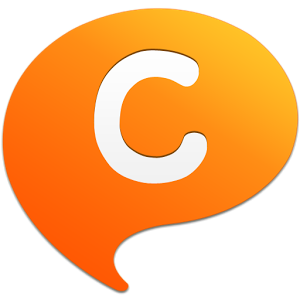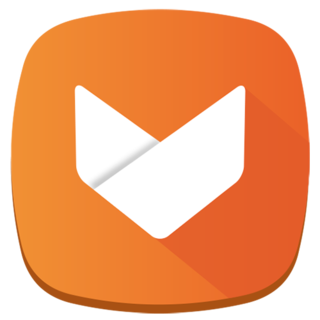
A smartphone is a portable computer device that combines mobile telephone functions and computing functions into one unit. They are distinguished from older-design feature phones by their more advanced hardware capabilities and extensive mobile operating systems, which facilitate wider software, access to the internet, and multimedia functionality, alongside core phone functions such as voice calls and text messaging. Smartphones typically contain a number of metal–oxide–semiconductor (MOS) integrated circuit (IC) chips, include various sensors that can be leveraged by pre-installed and third-party software, and support wireless communication protocols. More recently, smartphone manufacturers have begun to integrate satellite messaging connectivity and satellite emergency services into devices for use in remote regions where there is no reliable cellular network.

Microsoft OneNote is note-taking software, developed by Microsoft. It is available as part of the Microsoft Office suite and since 2014 has been free on all platforms outside the suite. OneNote is designed for free-form information gathering and multi-user collaboration. It gathers users' notes, drawings, screen clippings, and audio commentaries, and notes can also be shared with other OneNote users over the Internet or a network.
ShapeWriter was a keyboard text input method for tablet, handheld PCs, and mobile phones invented by Shumin Zhai and Per Ola Kristensson at IBM Almaden Research Center and the Department of Computer and Information Science at Linköping University.

Google Translate is a multilingual neural machine translation service developed by Google to translate text, documents and websites from one language into another. It offers a website interface, a mobile app for Android and iOS, and an API that helps developers build browser extensions and software applications. As of 2022, Google Translate supports 133 languages at various levels, and as of April 2016, claimed over 500 million total users, with more than 100 billion words translated daily, after the company stated in May 2013 that it served over 200 million people daily.

T9 is a predictive text technology for mobile phones, originally developed by Tegic Communications, now part of Nuance Communications. T9 stands for Text on 9 keys.

A virtual keyboard is a software component that allows the input of characters without the need for physical keys. The interaction with the virtual keyboard happens mostly via a touchscreen interface, but can also take place in a different form in virtual or augmented reality.

Windows Phone (WP) is a discontinued family of mobile operating systems developed by Microsoft for smartphones as the replacement successor to Windows Mobile and Zune. Windows Phone featured a new user interface derived from the Metro design language. Unlike Windows Mobile, it was primarily aimed at the consumer market rather than the enterprise market.

The Samsung Omnia II GT-I8000(H/L/U) is a multimedia smartphone announced at Samsung Mobile Unpacked on June 15, 2009. Earlier Omnia II releases run Windows Mobile 6.1, however they are upgradable to version 6.5 Professional. There is also an unofficial and experimental Android version available. Verizon is the official US carrier for this phone and released it in December 2009.

The Samsung Moment, known as SPH-M900, is a smartphone manufactured by Samsung that uses the open source Android operating system.

The Samsung Galaxy Tab 7.0 or simply Samsung Galaxy Tab is an Android-based mini-tablet computer produced by Samsung. Available from 5 November 2010. The tablet was first introduced on 2 September 2010 at the IFA in Berlin. The Galaxy Tab was the first Samsung Android-powered tablet to be released.
Dragon Dictation started as speech recognition application for Apple's iOS platforms, including iPhone, iPod Touch and iPad. The app provided automatic speech-to-text capabilities. It was developed by Nuance Communications, and released in December 2009 as a free app. It is now commonly found licensed in vehicle infotainment systems and healthcare equipment.
A mobile application or app is a computer program or software application designed to run on a mobile device such as a phone, tablet, or watch. Mobile applications often stand in contrast to desktop applications which are designed to run on desktop computers, and web applications which run in mobile web browsers rather than directly on the mobile device.
Vlingo was a speech recognition software company co-founded by speech-to-text pioneers Mike Phillips and John Nguyen in 2006. It was best known for its intelligent personal assistant and knowledge navigator, also named Vlingo, which functioned as a personal assistant application for Symbian, Android, iPhone, BlackBerry, and other smartphones. Vlingo was acquired by speech recognition giant Nuance Communications in 2012.

In a speed typing contest contestants compete to attain the highest accurate typing speeds. These contests have been common in North America since the 1930s and were used to test the relative efficiency of typing with the Dvorak and QWERTY keyboard layouts.
ETAOI keyboard is a text input software for touch screen-reliant devices. It is based on ETAOI method for coding.

Microsoft SwiftKey is a virtual keyboard app originally developed by TouchType for Android and iOS devices. It was first released for Android in July 2010, followed by an iOS release in September 2014 following Apple's implementation of third-party keyboard support.

ChatON was a global mobile communication service introduced by Samsung Electronics in September 2011. ChatON served more than 120 countries in 62 languages. ChatON was available on Android, iOS, BlackBerry, Windows Phone, Windows Mobile (Korea), and Bada smartphones. Additionally, a web client was offered for access to the service via web browsers. Users could invite and register buddies via Facebook and Twitter as well as share ChatON content on Facebook. Among ChatON's unique features were allowing users to create Animation messages, Broadcast to send personal notices in a group chat room, and the Trunk which stores media files shared in chats. When a user logs in ChatON, the user's buddy list is available on any connected device.

Aptoide is an online marketplace for mobile applications which runs on the Android operating system. In Aptoide, unlike the Android-default Play Store, there is not a unique and centralized store; instead, each user manages their own store. The software package is published by Aptoide S.A., a for-profit company incorporated in 2011, and headquartered in Lisbon, Portugal.











